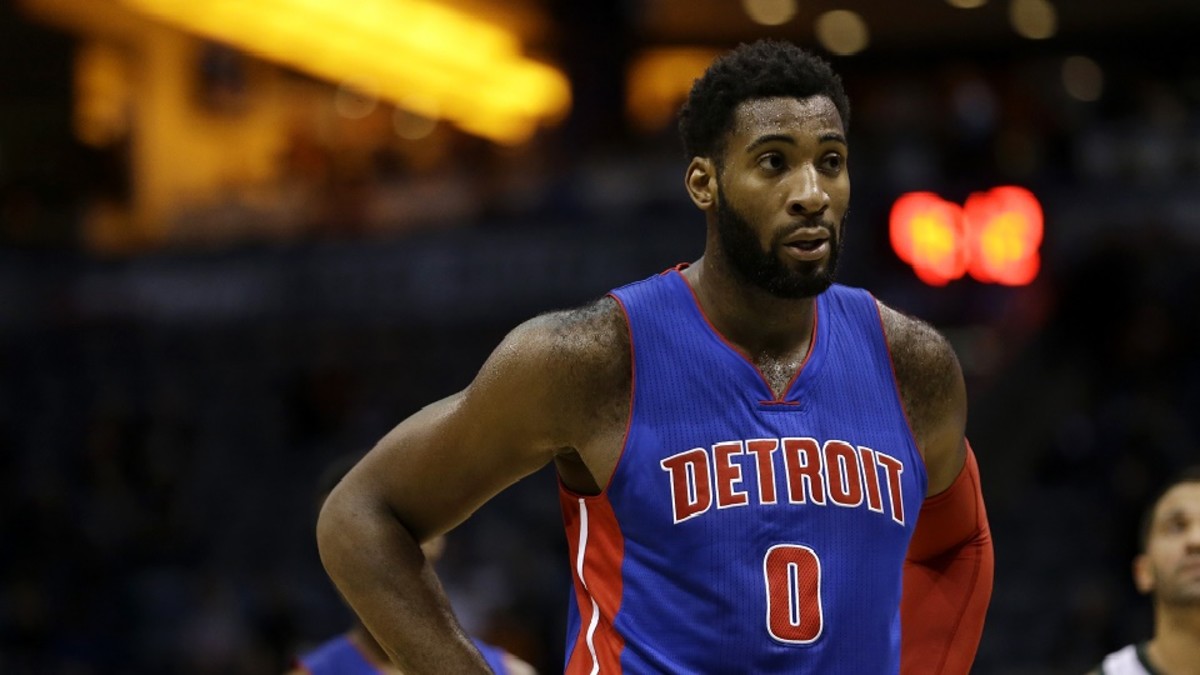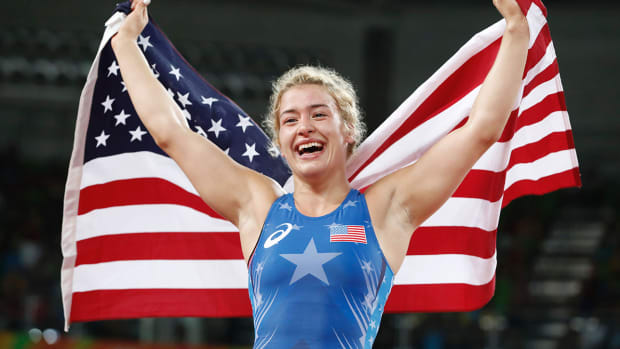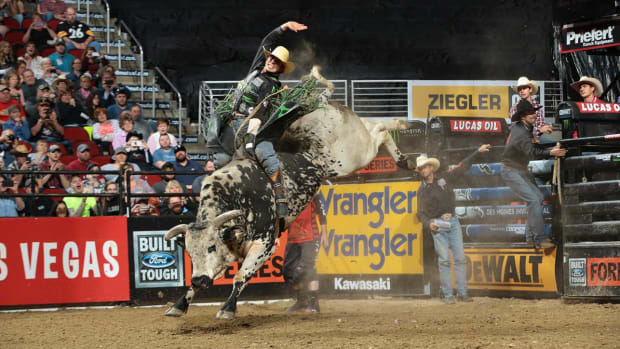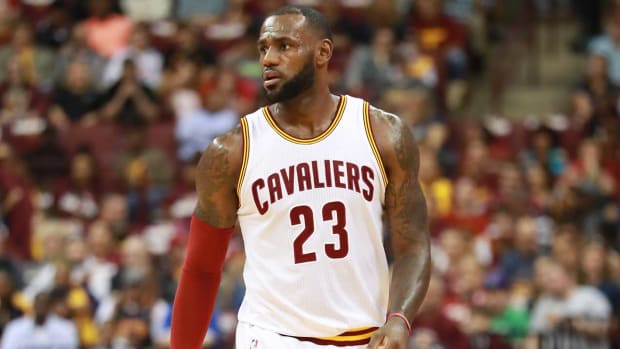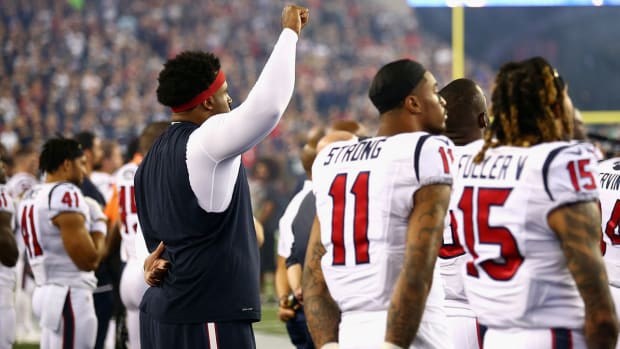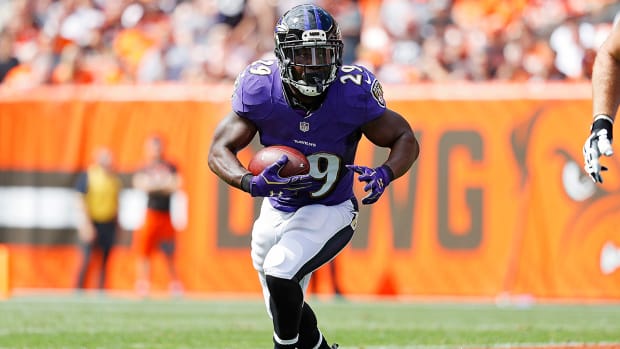How four NBA teams may use rookie contract cap holds to their advantage
Smart teams have long realized that the two most valuable types of contracts are true superstars on max deals and cheap rookie contracts. With rookie salaries prescribed for much lower yearly increases than the salary cap over the next few years, draft picks will become even more valuable than ever.
But there’s even more hidden value in these rookie deals. Upon expiration, they carry salary cap holds far lower than the players’ open market value. In the new NBA cap environment — when teams are more likely to have cap space, and their young players are likely to re-sign for salaries into eight figures — well-run teams can use these low cap holds to manufacture millions in cap room.
Functionally, a cap hold works as a placeholder for an expiring contract’s future salary, with the expectation that a free agent will re-sign with his current team. The team must keep the cap hold on the books if it wants to exceed the salary cap to re-sign that player, using Bird rights. Until the player re-signs, signs with another team, or is renounced, he stays on the team’s books at that amount.
Cap holds for players coming off rookie contracts are, in most cases, 250 percent of their prior salary — or 200 percent if their previous salary exceeds the Estimated Average Player Salary, which should be just under $6 million for the 2016–17 season. That means most players in this category have cap holds of less than $10 million. Second-rounders, who generally sign for near the league minimum, typically have cap holds in the neighborhood of $3 million, or even below.
Last summer, the Spurs (Kawhi Leonard), the Bucks (Khris Middleton), and the Celtics (Jae Crowder) all used this situation to their advantage, agreeing to contracts with their young players on the first day of free agency, and then signing them after they had spent up to the salary cap.
San Antonio manufactured an extra $9.2 million in space by preserving Leonard’s $7.2 million cap hold before re-signing him to a max contract starting at $16.4 million, while Milwaukee and Boston used the space created by Middleton’s and Crowder’s sub-$3 million cap holds before signing them to starting salaries of $14.7 million and $6.8 million, respectively. (An additional value note: Crowder’s contract actually decreases in 2016–17, when the C’s hope to strike again in free agency, while Middleton’s rises in 2016–17 and then decreases in 2017–18 and 2018–19 as Milwaukee will seek to add again to its young core.)
With a cap explosion of $19 million or more projected for next summer, even more teams are set to take advantage of low cap holds in 2016 to make noise in free agency. Here are some prime examples of what could be on tap:
Detroit Pistons — Andre Drummond
The Pistons are the most obvious candidate for this approach — because they have essentially admitted it is exactly what they are doing. It was recently reported that Drummond and the Pistons have tabled extension talks with the goal of maintaining flexibility next summer. This is despite owner Tom Gores having proclaiming Drummond a “max player” as soon as last season ended.
The payoff from waiting is an extra $12.8 million in cap space — the difference between Drummond’s projected max of $21 million and his $8.2 million cap hold. As a result, Detroit could have as much as $28 million in cap space, depending on whether it decides to move on from Ersan Ilyasova, who has only $400,000 of his $8.4 million contract guaranteed for 2016–17.
Another small benefit: waiting to re-sign Drummond allows Detroit to save its five-year “designated player” rookie extension for another player. Signing a player to an equivalent contract once he becomes a free agent does not count toward the designated player limit, since that is a new contract rather than an extension. Although nobody on the current roster projects to merit a “designated player” extension, Detroit might as well save the flexibility, if needed. A team may only have two players who signed “designated player” extensions on its roster, even if one were originally signed by another team.
The risk of this strategy is minimal for the Pistons. Even if Drummond sours on Detroit in the interim, the Pistons will still be able to match any offer in free agency, and require that such an offer be at least three years by submitting a Maximum Qualifying Offer (a full five-year max contract with no options) to Drummond next summer. The Maximum Qualifying Offer would cause his cap hold to shoot up to the max, but even in that worst-case scenario, Detroit would be no worse off than if it had extended Drummond for the max now.
It probably never comes to that. Turning down a five-year, $120.5 million contract would be rather remarkable, and Detroit could always (or perhaps has already agreed to) throw in an Early Termination Option on Drummond’s fifth year as a thank you for waiting.
What about the risk for Drummond? With so much money around the league and Drummond’s youth and physical gifts, he’d likely have max offers even if he suffers a season-ending injury. What’s more, failing to offer Drummond a max contract after convincing him to wait until next summer would not be a great look for a team that will have a ton of cap space and has struggled to attract free agents of late.
This is one situation where waiting until the summer makes great sense for both parties.
Washington Wizards — Bradley Beal
Last week we looked at the Wizards with the assumption that they do not extend Beal, instead retaining his $14.2 million cap hold into restricted free agency. That provides them about $31.4 million in cap space. With Kevin Durant’s projected maximum at $25.1 million, extending Beal starting at the maximum $21 million would make Durant an awfully tough squeeze, especially if Martell Webster can somehow play in 70 games and trigger a full guarantee of his 2016–17 salary.
Instead, it seems almost certain Washington will wait on Beal.
While the rising cap will allow the Wizards to create this room in the first place, it did have some negative consequences for Beal’s cap hold. Despite making $5.695 million this year, Beal will fall below the Estimated Average Player Salary ($5.739 million this year, and certain to increase next year), which means his cap hold next summer is 250 percent (not 200 percent) of his $5.695 million salary, costing the Wizards somewhere around $2.8 million in extra room next summer.
Los Angeles Lakers — Jordan Clarkson
The Lakers would seem to be sitting pretty with Clarkson’s $3.0 million cap hold next summer and the right to match any offer in restricted free agency after his second year. (Note, that cap hold assumes he starts 41 games or plays 2,000 minutes this year; if not, it will be a bit under $1.2 million.) But while Clarkson’s small cap hold is a boon, the Lakers could have simply gotten him under contract for 2016–17 instead by signing him to a three- or four- year minimum contract using cap space upon drafting him in 2014.
Signing a second-rounder or undrafted free agent to such a contract does have a small cost, since only minimum contracts two years or fewer fit within the minimum salary exception, which can be used regardless of how far over the cap a team is. Any longer contract, even if it is for the minimum salary, must be carved out of cap space or an exception in the initial year. (For example, the Houston Rockets are hard-capped at the Apron this year because they were forced to use part of their mid-level exception to sign Montrezl Harrell to a contract longer than two years.)
The Lakers could have signed Clarkson to a three- or four-year contract at any time when they had fewer than 12 players under contract in the summer of 2014 with no detriment to their cap space, since his minimum starting salary of $507,336 was the same as an empty roster charge. If they signed Clarkson for longer than two years (using cap space), the Lakers could have had him under contract for his minimum salary of $980,431 in 2016–17. Now, if Clarkson has a successful second season, he could well get maxed out by another team unless the Lakers agree to give him a substantial raise (but maintain his low cap hold until finishing their other business).
A maximum offer sheet for a player coming off his first or second year, as Rockets GM Daryl Morey taught us with offer sheets for Jeremy Lin and Omer Asik in 2012, is limited to the mid-level exception for the first two years (under the Gilbert Arenas provision), which is designed to allow even capped-out teams to match. The offer sheet can then rise to the player’s maximum for years three and four of an offer sheet. Thus, rivals could offer Clarkson a projected four-year, $58.1 million contract in restricted free agency. With a thin point guard market, some team might easily decide that around $14.5 million per season for a player of Clarkson’s potential is totally reasonable.
That’s not the only quirk of the situation. To make the offer, suitors would need cap space equal to that $14.5 million average. Were the offer sheet not matched, Clarkson would then have that same cap number on the receiving team’s books for all four years of the contract.
If the Lakers matched, however, Clarkson’s cap hit and salary would be limited to the MLE in his first year and the MLE plus the maximum 4.5 percent raise in the second year. But the cap number and salary would then explode to $22.8 million in the third year and $23.8 million in the fourth year. Those enormous “poison pill” salaries in the last two years would not be particularly palatable in some circumstances, and could be an impetus for the Lakers to reach their own agreement on a “normal” contract with Clarkson before he gets an offer sheet from another team.
On the other hand, if the Lakers also want to be active in the 2017 free agent market, having Clarkson under contract that year for a mere $5.9 million could facilitate those moves. So, depending on how much long-term salary they take on next summer, the Lakers might actually welcome an outside offer sheet as a means of paying Clarkson market value while simultaneously keeping his cap number artificially low in the summer of 2017, when L.A. native Russell Westbrook and fellow Staples Center occupant Blake Griffin are scheduled to headline a deeper free agent class.
Tyler Zeller — Boston Celtics
The Celtics also figure to be a player in the 2016 free agent market, in part because of Zeller’s small cap hold. If he does not extend prior to the Nov. 2 deadline, Zeller will be on the books for a mere $6.5 million next summer. That’s quite a bit less than his likely market value range of $10 million to $14 million per year.
With Zeller currently slated to start alongside David Lee and the Celtics a potential dark horse to sneak into the upper half of the East playoff bracket, there is even the possibility Zeller gets more than that. If he and the Celtics are unable to agree on an extension (which would likely require a significant discount to forego taking advantage of his low cap hold), Boston should be able to preserve at least $5 million in cap space by waiting to re-sign him.
